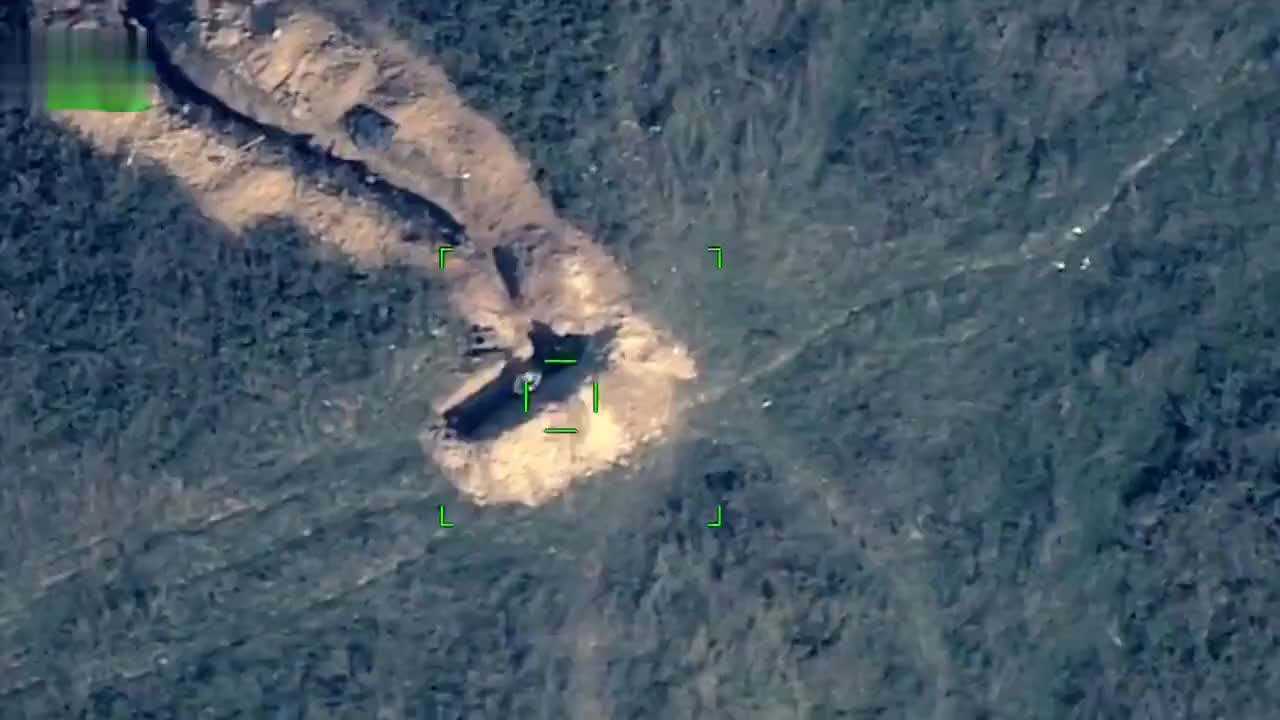During the Nagorno Karabakh conflict, Azerbaijan and Armenia used drones to carry out reconnaissance, attack and assessment, showing the world the way and power of drones dominate the battlefield.
Drones will be an important force in the modern battlefield in the future. Especially for countries with relatively small territorial area and military size, advanced weapons can often be an important factor in determining the direction of war.
Drones become the main force of the Nagorno Karabakh
Before the war, Azerbaijan bought a large number of drones from Turkey and Israel.
There are mainly TB-2 reconnaissance integrated drones, Harup suicide drones, searcher medium-range reconnaissance drones, Sputnik short-range reconnaissance drones and Azerbaijan’s modified An-2 drones.
The Turkish TB-2 UAV is a one-in-one UAV, which adopts a wing fuselage fusion design, and the tail adopts an anti-V tail structure to obtain better flight performance.
This is the world’s first drone with modular design.
The wings, fuselage and V-tail can be dismantled and then assembled by themselves.
The TB-2 drone has a length of 6.5 meters, a wingspan of 12 meters, a maximum take-off weight of 630 kg, a maximum payload of 55 kg, a maximum flight altitude of 6 kilometers, a maximum flight speed of 222 kilometers per hour, a cruise speed of 130 kilometers per hour, and a battery life of up to 27 hours.
The TB-2 UAV system consists of six aircraft, two ground control stations, three ground data terminals, two remote video terminals and ground support equipment.
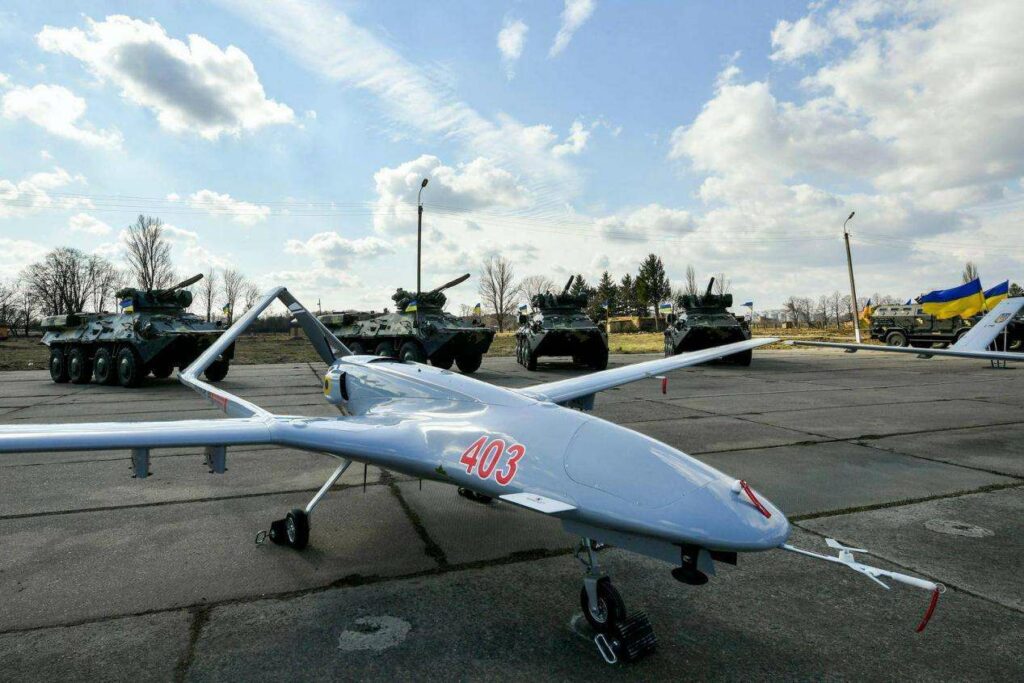
TB-2 drone provided by Turkey to Azerbaijan.
The TB-2 UAV has a combat radius of 150 kilometers and can complete a series of operations such as independent take-off and landing in long-range control or automatic mode.
UMTAS anti-tank missiles and precision-guided bombs with a range of 8 kilometers can be carried, of which laser-guided UMTAS missiles can accurately hit ground targets at an altitude of 8 kilometers and about 5 kilometers.
The Harrop suicide drone has received high attention for destroying the S-300PS long-range surface-to-air missile system. Harop is a new type of drone developed by Israel, which is specially designed for radar and air defense systems, and is responsible for battlefield reconnaissance and air defense suppression operations.
Launched by a vehicle launcher, it can fly for six hours after launch, with a range of more than 1,000 kilometers and a 23 kg high explosive combat headquarters.
Once the radiation source is found, the route can be automatically or manually selected to detonate the warhead to destroy the target. It can also attack ground targets without radiation sources, such as light armored vehicles, soldiers, etc.
The An-2 drone is a suicide drone developed from the old An-2 transport aircraft. The Azerbaijani army has at least 60 pieces of equipment.
This drone is mainly responsible for acting as bait, luring enemy anti-aircraft fire, and cooperating with other drones to destroy the opponent’s fire points.
In contrast, the Armenian army is equipped with fewer drone models, mainly small/micro drones developed by the country, such as the crane series reconnaissance drones, which are mainly used for close reconnaissance missions.
During the conflict, several drones in this series were shot down. In addition, there is an X-55 reconnaissance drone, which is powered by hybrid power, with a maximum communication radius of 85 kilometers and no combat capability. It mainly guides artillery to attack.
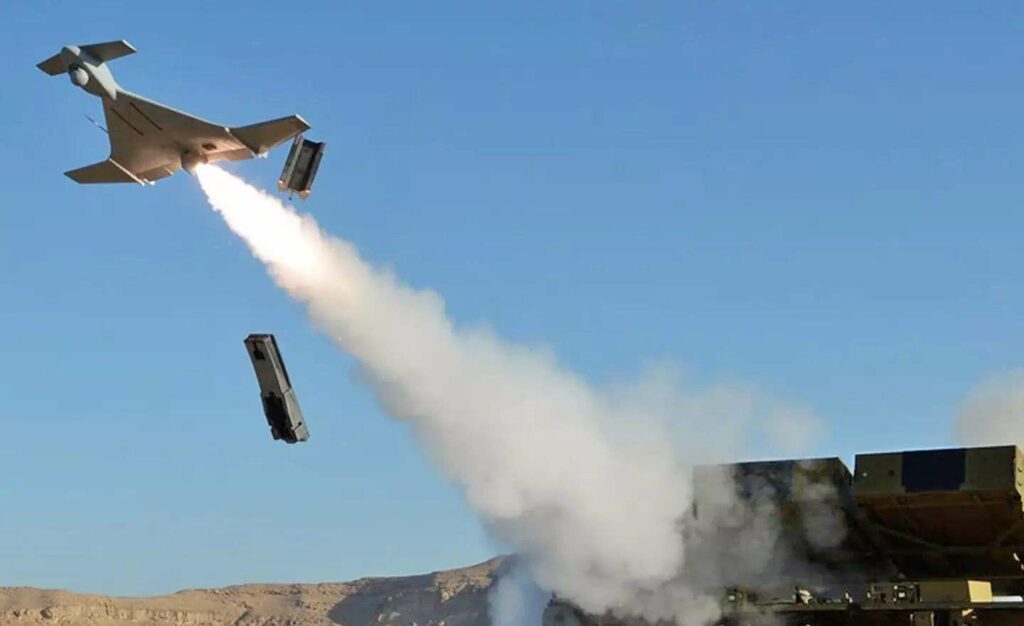
How can the Nagorno Karabakh drones exert their combat effectiveness?
During the Nagorno Karabakh conflict, Azerbaijan organically combined a large number of drones with tanks and artillery to effectively attack the other party’s tank armored vehicles and seize local air supromacy on the battlefield, thus forming a favorable battlefield situation.
Nearly 100 T-72B main battle tanks and more than 100 BMP-1/2 infantry fighting vehicles were destroyed by the Armenian army.
It also destroyed the runner-up strategic equipment, including BM-30 long-range rocket launchers, 9K33M and 9K35 field air defense systems, and S-300PT/PMU2 regional air defense systems.
“Hives” suppress, full-depth attack. In the Nagorno Karabakh conflict, Azerbaijan accepted Turkey’s guidance and turned the situation around in the face of heavy damage to ground armored forces and used drone group assault tactics.
Over the battlefield in the Nagorno Karabakh region, unmanned weapons and equipment control the battlefield situation.
The Azerbaijani army has repeatedly achieved results by using foreign-produced and inexpensive drones and cruise missiles to break through the air blockade of the other side and attack the land targets of Armenian forces.
At the first time of the outbreak of the conflict, the Arab army put a large number of drones into action and carried out active actions on the front line.
Afghan infantry and tank forces, supported by their own artillery, missiles, front-line aircraft and drones, have detected and destroyed the front and deep Armenian troops, military facilities and weapons.
At the same time, the type and scope of targets attacked by Azerbaijani drones have been further expanded, deployed behind the front. The army’s rockets, command posts, transport vehicles and marching columns have been accurately attacked by drones.
The range of action of the Arab army’s drones has advanced from the front, which greatly limits the tactical maneuvers of the Armenian army, making the second team appear that the first echelon is controlled in the position and dare not move on the second echelon.
No, as long as the technical equipment dares to come out, it will be destroyed in large quantities.
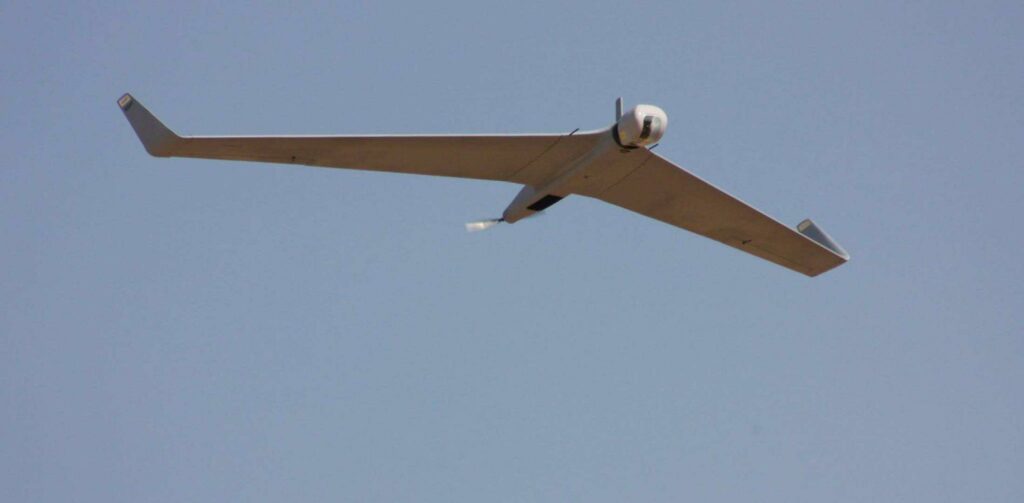
Induce the enemy to expose and destroy accurately.
In the Nagorno Karabakh region conflict, Azerbaijan used a large number of inexpensive drones modified from Soviet-era An-2 aircraft to attract firepower, sacrificing part of them to let Nagorno Karabakh Armenian anti-aircraft missiles hit casually, which not only exposed the enemy’s air defense positions, but also consumed anti-aircraft firepower, and then unit priced The $5 million TB-2 drone with multiple warheads is responsible for the task of clearing enemy air defense systems and other strongholds.
Due to the lack of air-control fighters on both sides, small drones have become the protagonists of the battlefield.
In early October, Azerbaijani President Aliyev said in an interview with Turkish TRT Haber TV: “Our casualties on the front line have been reduced due to the possession of advanced Turkish TB-2 drones by the Azerbaijani military…
If these [drones] combat strength are not obtained, Aser It is much more difficult to destroy the armed forces that have been operating by opponents for 30 years.
Low-cost drones are changing future wars
In the Nagorno Karabakh, the wide application of low-cost drones and cruise missiles has changed the traditional combat form of air-ground support and the capture of air supremacy in the battlefield, and created a favorable battlefield situation.
In just a few weeks of the Nagorno Karabakh conflict, the Azerbaijani military took advantage of the special advantage of drones to detect and attack the ground, causing the Armenian military to lose more than 100 tanks, and even used drones to destroy its deployed mosquito repellent-1 anti-UAV systems and multiple 9k33 surface-to-air missile systems.
By the time the Azerbaijani army concentrated its forces in attacking Shusha, the gateway of Stepanakert, the resistance of the Armenian army was extremely weak. The use of drones in this conflict has become the clearest evidence to date that drones are changing the battlefield situation.
The use of helicopter gunships or anti-tank missiles in traditional warfare is the most ideal choice for dealing with tanks and armored vehicles. However, for both sides of the Nagorno Karabakh conflict, helicopter gunships and fighter jets are expensive and limited in number, and are basically not put into the battlefield.
Azerbaijani forces, which used to be even even outperformed with Armenian forces, used low-cost drones to support ground force operations, effectively destroying the tanked armored vehicles of the Armenian defense forces, and seized partial air supremacy on the battlefield, forming a favorable battlefield posture.
Low-cost drones can be used as tactical aviation and precision guidance weapons to destroy equipment such as much more expensive tanks and air defense systems. It is increasingly important to use other weapons such as tank armored vehicles and well-trained ground troops while also dispatching armed drones. If you don’t do so in future wars, it will have huge destructive consequences.
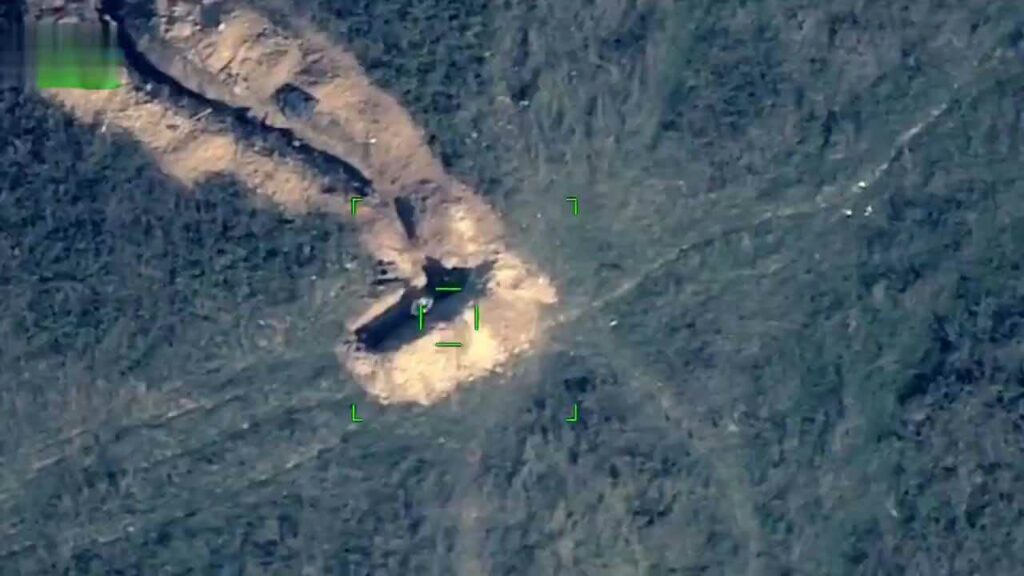
Suicide drones attack the target.
In addition, although Armenia has an S-300 anti-missile system and Sam-2 and Sam-13 short-range surface-to-air missiles, these anti-aircraft weapons do not constitute a networked combat system, and there is a lack of an effective reconnaissance and early warning system for drones and cruise missiles with low radar signals.
This gives the TB-2 drone a lot of room to use.
The Nagorno Karabakh conflict suggests that weapons systems such as low-cost drones may become more and more common as technology advances and costs decrease.
Relatively inexpensive small attack drones can change the war situation once dominated by ground warfare and traditional air forces. Even advanced weapon systems, tanks, radar and surface-to-air missiles have weaknesses.
Azerbaijan used drones purchased from Israel and Turkey to track and destroy Armenian weapons systems in the Nagorno Karabakh and undermine their defenses.
However, many old Soviet air defense systems deployed by Armenia in the Nagorno Karabakh could not resist drone attacks, and the losses quickly increased, enabling the Arab side to advance quickly.
The organic combination of low-cost drones and other weapons and equipment such as manned fighters can improve combat effectiveness. Although low-cost drones in the Nagorno Karabakh conflict show strong combat power, Azerbaijan does not have high-altitude long-range detection and stealth drones, and the use of drones and cruise missiles is relatively simple, unable to completely destroy the positions of Armenian forces, and does not cooperate well with other arms.
In the face of Armenia’s weak air defense system, drones, although “useable”, are difficult to form a repressive strike to make the other side succumb. In future operations, if low-cost UAVs are intelligently modified to a certain extent, and the “swarm” tactics are adopted.
UAVs, cruise missiles, manned fighters, tanks, artillery, etc. are closely cooperated, which can form more effective suppression and asymmetric strikes. The expanding lineup of low-cost intelligent drones can expand the national air force at a cost of only a small part of the cost of maintaining a traditional air force, but the combat effectiveness it brings is huge.
Drones are an important force in the modern battlefield in the future and will play an increasingly prominent role.
For countries with relatively small size of land and military size, advanced weapons such as drones can often become important factors determining the direction of war.
With the continuous in-depth exploration of drone technology and tactics, the role of drones in joint operations will be more important.


